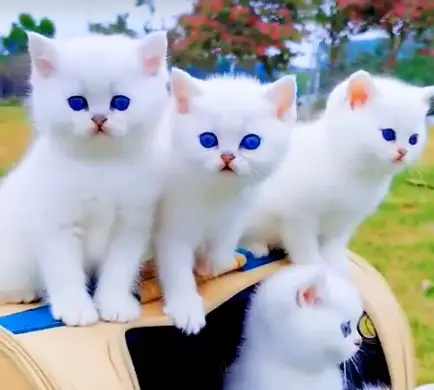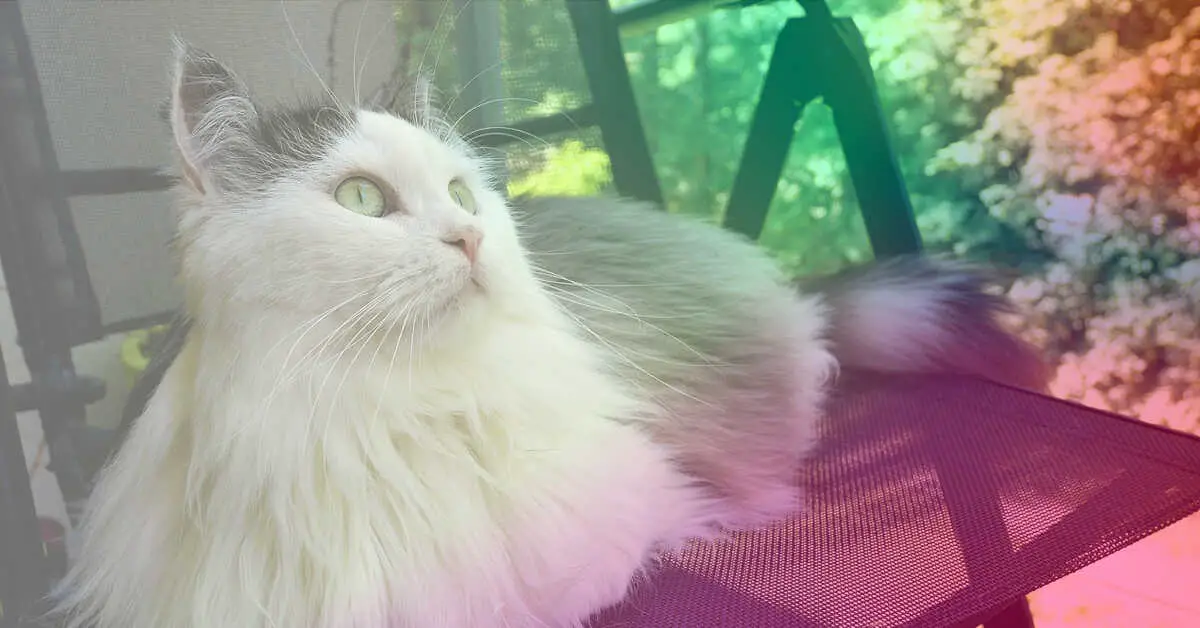Counting cat breeds can be tricky, like chasing yarn balls in a sunbeam! Different registries have different criteria, leaving us with a range to purr at: roughly 40 to 71 recognized breeds around the world.
How Many Breeds of Cats Are There in The World?
There are dozens of recognized cat breeds in the world, and the exact number can vary depending on the organization or registry that is counting. The International Cat Association (TICA), for example, currently recognizes 71 different breeds of cats.
The Cat Fanciers’ Association (CFA), on the other hand, recognizes 44 breeds, while the World Cat Federation (WCF) recognizes a total of 55 breeds.

In addition to these major organizations, there are many other smaller cat registries that recognize a variety of breeds.
As a result, it’s difficult to say definitively how many cat breeds there are in the world.
However, it’s safe to say that there are at least 40 and possibly as many as 100 different breeds.
In addition to these recognized breeds, there are also many non-recognized or “hybrid” breeds, which are created by breeding domestic cats with wildcat species or other domestic breeds.
These breeds are not recognized by mainstream cat registries but may be recognized by smaller organizations or clubs.
It’s worth noting that the process of recognizing and standardizing cat breeds is ongoing, and new breeds are being developed and recognized all the time.
Therefore, the total number of recognized cat breeds can vary from year to year as new breeds are added or removed from the list. So, there are many breeds of cats in the world, and the exact number can depend on the organization or registry that is counting.
Related: 5 Best Cat Breed for Busy Family
What factors contribute to the variation in numbers?
There are a few factors that contribute to the variation in the number of cat breeds recognized by different organizations. One factor is the criteria that each organization uses to define a breed.
For example, the CFA requires that a breed have a minimum of 100 registered cats in order to be recognized. TICA, on the other hand, has no minimum number requirement.
Another factor that contributes to the variation in numbers is the way that different organizations classify cat breeds. The CFA, for example, divides cat breeds into seven groups:
- Asian
- Domestic
- Exotic
- Foreign
- Natural
- Oriental
- Rare and Unusual
TICA, on the other hand, divides cat breeds into four categories:
- Classic
- Experimental
- Natural
- Premiership
Domestic Cat Breeds
When it comes to domestic cat breeds, there are three main categories: short-hair, medium-hair, and long-hair. Let’s take a closer look at each:
Short-hair breeds
Short-hair breeds are known for their sleek, low-maintenance coats, which require minimal grooming. Some popular short-hair breeds include the American Shorthair and the British Shorthair.
Medium-hair breeds
Medium-hair breeds have a slightly longer coat than short-hair breeds, which requires a bit more grooming to keep it looking clean and shiny. Some popular medium-hair breeds include the Maine Coon and the Persian.
Long-hair breeds
Long-hair breeds have a thick, luxurious coat that requires regular grooming to prevent tangles and mats. Some popular long-hair breeds include the Abyssinian and the Siamese.
Hairless cat breeds
These breeds are known for their lack of fur and wrinkled skin. They require more grooming and bathing than other breeds, as well as regular veterinary checkups to monitor their skin and overall health. Hairless cat breeds include the Sphynx, Peterbald, Donskoy, Ukrainian Levkoy, and Bambino.
Exotic Cat Breeds
In addition to domestic cat breeds, there are also a number of exotic cat breeds available. These breeds are generally created by crossing domestic cats with wildcat species and include both hybrid breeds and wildcat breeds.
Hybrid breeds
Hybrid breeds are created by crossing domestic cats with wildcat species and are generally known for their exotic appearance and energetic personality. Some popular hybrid breeds include the Bengal and the Savannah.
Wildcat breeds
Wildcat breeds are created by crossing domestic cats with purebred wildcat species and are generally known for their exotic appearance and wilder personality. Some popular wildcat breeds include the African serval and the Asian leopard cat.
Related: 8 Best Cat Breeds for Kids
Emotional Support Cat Breeds
Emotional support cat breeds are feline companions that provide comfort, and companionship. And also the emotional well-being of individuals who are dealing with various mental health challenges, such as anxiety and depression.
While any cat can potentially provide emotional support, some cat breeds are known for their temperament, personality traits, and behavior which make them particularly suitable for this role.
Certain cat breeds are often recommended as potential emotional support animals due to their gentle nature, affectionate behavior, and their ability to bond closely with their owners. Some of the cat breeds that are commonly considered good choices for emotional support include: Ragdoll, Maine Coon, Siamese, Birman, Persian, and Sphynx etc.
It’s important to note that the effectiveness of an emotional support cat in alleviating anxiety and depression varies from individual to individual.
Related: 501 Most Popular Male Cat Names
Factors to Consider When Choosing a Cat Breed
Bringing a cat into your home is a joyous decision, but with countless breeds to choose from, finding the right feline companion can be a delightful challenge.
Understanding the key factors that influence your choice ensures a harmonious match between your lifestyle and your cat’s needs.
1. Size Matters: Consider the size of the cat breed in relation to your living space. Larger breeds like Maine Coons or Ragdolls may thrive in spacious homes, while smaller breeds like the Singapura or Munchkin are well-suited for cozier environments.
2. Activity Levels: Cats vary in their energy levels, from highly active to more laid-back. If you lead an active lifestyle and desire a playful companion, breeds like the Bengal or Abyssinian might be ideal. Conversely, if you prefer a more relaxed vibe, breeds such as the British Shorthair or Persian could be perfect.
3. Grooming Requirements: Different breeds have distinct grooming needs. Long-haired breeds like the Persian or Maine Coon demand regular grooming to prevent matting, while short-haired breeds like the Siamese or American Shorthair are generally lower maintenance.
4. Allergies: If you or someone in your household has allergies, consider hypoallergenic cat breeds like the Siberian or Balinese. These breeds produce fewer allergens, potentially making them a more suitable choice for individuals with sensitivities.
5. Temperament and Personality: Cats exhibit diverse personalities, and matching a breed’s temperament with your lifestyle is crucial. Some breeds, like the Scottish Fold or Ragdoll, are known for their calm and affectionate nature, while others, such as the Bengal or Abyssinian, are more active and independent.
6. Sociability: If you’re seeking a social and outgoing cat, breeds like the Maine Coon, Ragdoll, or Sphynx are often known for their friendly disposition. On the other hand, if you prefer a more independent companion, breeds like the British Shorthair or Russian Blue might be suitable.
7. Vocalization: Cats vary in their vocal tendencies, from chatty breeds like the Siamese to quieter breeds like the Scottish Fold. Consider your tolerance for meowing and vocalization levels when choosing a breed that aligns with your comfort.
8. Lifespan and Health Considerations: Different breeds have varying lifespans and potential health concerns. Research the typical lifespan and common health issues associated with your chosen breed to ensure you’re prepared for potential veterinary care and long-term commitment.
9. Adaptability: Consider the adaptability of a cat breed to changes in the household or routine. Some breeds, like the Oriental Shorthair or Bengal, may handle changes more seamlessly, while others, such as the Devon Rex or Cornish Rex, might be more sensitive.
10. Compatibility with Other Pets: If you have other pets, investigate a cat breed’s compatibility with different animals. Breeds like the Ragdoll or Birman are often known for their affable nature, making them more likely to get along with other pets.
11. Maintenance of Special Features: Certain breeds come with special features that require extra attention. For example, breeds with folded ears, like the Scottish Fold, may need careful ear cleaning. Breeds with distinctive facial features, like the Persian, may require eye care due to tear staining.
12. Breeds with Unique Characteristics: Explore breeds with unique physical traits or characteristics that capture your interest. Whether it’s the curled ears of the American Curl, the hairless appearance of the Sphynx, or the striking color points of the Siamese, these distinctive features can add a special touch to your feline companion.
13. Breeding and Adoption Considerations: Decide whether you want to adopt a cat from a shelter or acquire a specific breed from a breeder. Both options have their merits, but it’s essential to understand the responsibilities and considerations associated with each choice.
14. Budgetary Considerations: Different cat breeds may come with varying costs, from initial adoption or purchase fees to ongoing expenses for food, grooming, and veterinary care. Assess your budgetary constraints to ensure you can provide for your cat’s needs comfortably.
15. Personal Preferences: Ultimately, personal preferences play a significant role in choosing a cat breed. Whether you’re drawn to the regal appearance of a Persian, the playful antics of a Bengal, or the gentle nature of a Ragdoll, aligning your choice with your preferences enhances the likelihood of a fulfilling companionship.
Conclusion
In the end, finding the right cat breed involves a thoughtful blend of practical considerations and personal preferences.
By assessing these factors, you’ll embark on a journey to welcome a feline companion whose characteristics harmonize with your lifestyle, creating a bond that brings joy and fulfillment to both you and your new furry friend.
His professional interests include humane education, ethics, small animal behavior, and veterinary. As a pet lover from school life, having grown up with two cats and a dog. If he isn’t spending time with his friends and family, Justin enjoys traveling. Learn more about Justin here.

